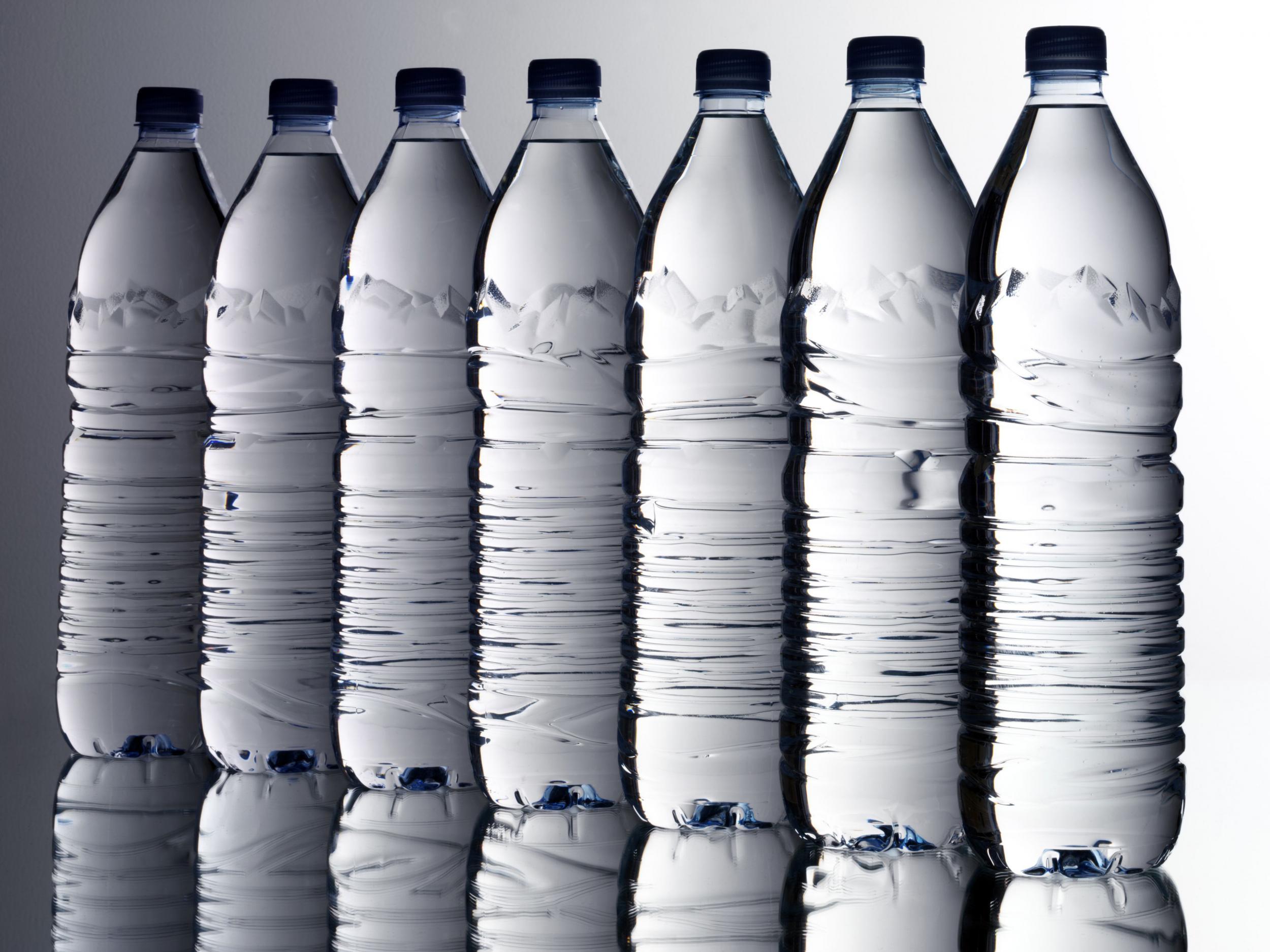Microplastic particles: Is bottled water still safe to drink after researchers find 'almost all' brands contaminated?
World Health Organisation announces investigation over health scare surrounding 'potentially harmful' flakes found in majority of shop-bought water

Your support helps us to tell the story
From reproductive rights to climate change to Big Tech, The Independent is on the ground when the story is developing. Whether it's investigating the financials of Elon Musk's pro-Trump PAC or producing our latest documentary, 'The A Word', which shines a light on the American women fighting for reproductive rights, we know how important it is to parse out the facts from the messaging.
At such a critical moment in US history, we need reporters on the ground. Your donation allows us to keep sending journalists to speak to both sides of the story.
The Independent is trusted by Americans across the entire political spectrum. And unlike many other quality news outlets, we choose not to lock Americans out of our reporting and analysis with paywalls. We believe quality journalism should be available to everyone, paid for by those who can afford it.
Your support makes all the difference.The World Health Organisation (WHO) has announced it will conduct an investigation into bottled mineral water after a study found traces of microplastic flakes in “almost all” brands researched in recent tests.
The WHO expressed concern about the potentially harmful effects the particles could have on public health – but did move to reassure those concerned over the safety of shop-bought water.
Tests carried out at the State University of New York in Fredonia found that most of the 259 bottles of water assessed by researchers from 11 different brands were contaminated.
Scientists found an average of 10 plastic particles per litre of water, each one larger than a human hair.
Microplastics are small plastic particles derived from a variety of sources such as cosmetics, clothing, industrial processes, packaging materials and the degradation of larger plastic items.
The WHO stressed that, at present, there is no evidence that microplastics pose a risk to human health but said that it wanted to assess the situation over long periods.
Bruce Gordon, co-ordinator for the WHO’s global work on water and sanitation, told BBC News that the key question was whether a lifetime of consuming small particles of plastic could have a detrimental effect.
“When we think about the composition of the plastic, whether there might be toxins in it, to what extent they might carry harmful constituents, what actually the particles might do in the body – there’s just not the research there to tell us,” he said.
“We normally have a ‘safe’ limit but to have a safe limit, to define that, we need to understand if these things are dangerous, and if they occur in water at concentrations that are dangerous.”
The UK Food Standards Agency also moved to reassure consumers.
“Based on current information, including the evaluation on the safety of microplastics exposure from food undertaken by the European Food Safety Authority, it is unlikely that the levels of microplastic particles reported in this study to be present in bottled water would cause harm to consumers,” a spokeswoman said.
“Microplastics are present in the environment, both on land and in water, therefore some presence in food is likely, but that doesn’t necessarily mean that this presence is harmful. We will assess any emerging information concerning microplastics in food and drink.”
The rapid screening method used in the test was developed at the University of East Anglia (UEA) and worked by identifying microscopic plastic particles – as small as a few micrometres – in water by staining them using fluorescent Nile Red dye.
“We are becoming increasingly aware of microplastics in the environment and their potentially harmful effects, but their prevalence in other areas has been much less studied,” Dr Andrew Mays of the UEA said.
“They have been reported in tap water, beer and many other foods, but I think that people will be surprised that almost all bottled water appears to be contaminated too.
“This study analysed more than 250 bottles from 27 lots and 11 different brands from around the world, so it is the largest and most comprehensive study of water I know of to date and almost all were contaminated to some degree.
“The method we pioneered here at UEA was used, and it is very pleasing to see it used to facilitate this type of large-scale study, which would have been hugely time-consuming and prohibitively expensive using conventional approaches.
“What the results don’t show is where these plastic particles are coming from – but I would expect that most is coming from the processing and packing process, though some may be coming from the original water source in some cases.
“What we do know is that microplastics are in the environment all around us – and they’re accumulating. They’re in the food web in our oceans and now we know they’re in most of our bottled water too.”
A spokesperson for the Natural Hydration Council, which has among its members Highland Spring and Danone Waters, said:
“Consumer health and safety is our top priority. We would like to reassure the public that all natural source bottled water is safe and is subject to significant testing, amounting to several hundreds of thousands of tests each year for every brand of bottled water sold in the UK. It has to be frequently tested at the ingredient level (the source) and finished product level (bottles) and it is not released for sale until the appropriate controls show it is safe for human consumption.
“A recent scientific study published in the peer-reviewed journal Water Research concluded that no statistically relevant amount of microplastic can be found in water in plastic bottles. The Orb Media report has not been independently evaluated by scientific peer review and needs further investigation.”
Join our commenting forum
Join thought-provoking conversations, follow other Independent readers and see their replies
Comments